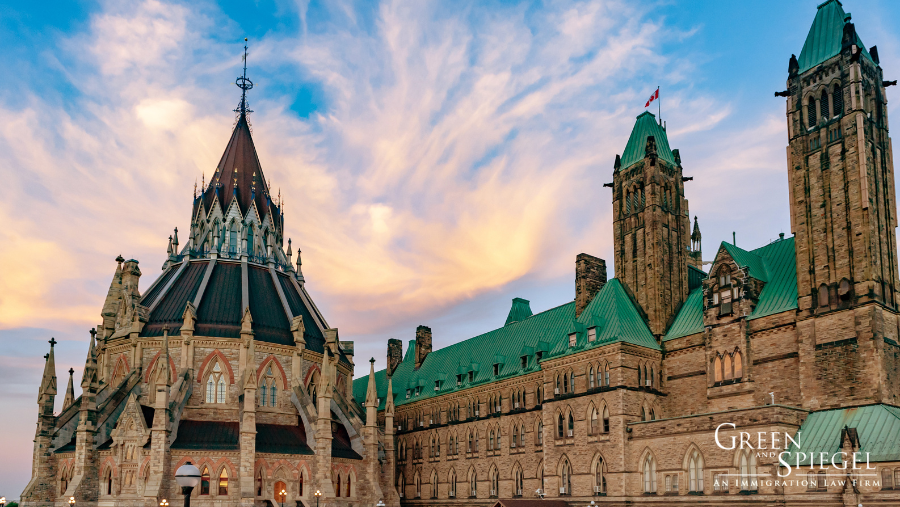
On December 19, 2023, the Ontario Superior Court of Justice decided in a landmark ruling, Bjorkquist et al. v. Attorney General of Canada, that the “second-generation cut-off” rule at section 3(3)(a) of the Canadian Citizenship Act is unconstitutional, and after a six-month period of invalidity will be of no force and effect.
What is the Second-Generation Cut Off Rule?
Eligibility for Canadian citizenship by descent is based on the Citizenship Act under section 3. Paragraph 3(1)(b) describes that a person born outside Canada, who at the time of birth has a Canadian parent, other than an adoptive parent, is a Canadian citizen.
Paragraph 3(1)(b) of the Act is a long-standing provision which confers Canadian citizenship by descent. However, on April 17, 2009, the rules for Canadian citizenship changed, creating a cut‑off rule which prohibited foreign born Canadians who acquired citizenship by birth from passing their citizenship on if their children are also born abroad.[1] This change was the Canadian government’s response to a mass evacuation of Lebanese Canadians, and introduced as an approach to discourage “Canadians of convenience”.
What is the pre-2009 ‘substantial connection’ test?
Prior to 2009, the second or subsequent generation of children born abroad were able to retain their Canadian citizenship if they lived one year in Canada and applied prior to the age of 28; or if they demonstrated having a ‘substantial connection’ to Canada.
A substantial connection could be demonstrated in two ways:
- Having worked abroad for the Canadian Forces, the RCMP, or the United Nations as a Canadian representative, or
- Having adequate knowledge of Canada, one of its official languages, and the privileges and responsibilities of citizenship, as well as having lived in Canada for one year since the age of 14 either with a family member or at a Canadian secondary or post‑secondary institution.
The 2009 changes to the Citizenship Act removed the right for Canadians born abroad to pass their citizenship on to their children born abroad, regardless of any substantial connection they might have to Canada.
What did the Superior Court of Justice decide?
On December 19, 2023, the Ontario Superior Court of Justice declared that the second-generation cut off for those born abroad is unconstitutional. Arguing that the law leads to discrimination on the basis of national origin, by creating a lesser class of citizens without the automatic right to return to Canada to live with their born-abroad children. In addition, the applicants argued that the law violates their mobility rights, and disproportionately puts first-generation born abroad women at a disadvantage when they give birth outside of Canada.
Agreeing that the law violates the Charter on the basis of national origin and sex, the Judge declared the provision to be of no force or effect, but suspended the declaration of invalidity for a period of six months to give the Federal Government time to amend the Act. On January 22, 2024, the Federal government announced it would not be appealing the ruling. “This law, as it currently stands, has had unacceptable consequences for Canadians whose children were born outside the country. For this reason, we will not appeal the ruling,” Immigration Minister Marc Miller said in a media statement.
What does this mean for applicants?
At this time, it remains unclear precisely how the government will provide relief to the second generation born abroad. According to the Honourable Marc Miller, “people who may be impacted by this situation will no doubt have questions about what this means for them and their families. That is why we will continue to assess the impacts of the decision on existing legislation and will provide more information and confirm next steps as quickly as possible.”
One such answer is found in Bill S-245, which was introduced prior to the Bjorkquist decision and is currently before the House of Commons. The Bill proposes amendments to the Citizenship Act to reintroduce the “substantial connection” criterion for second-generation citizenship, to be met through a physical presence requirement equivalent to three years cumulatively. Should this bill be passed in its current form, it is likely that the provision will require the second-generation born abroad to prove physical presence through supporting documentation, much like Canadian permanent residents who must meet residency requirements to maintain their PR status or apply for citizenship.
Although at this point in time it remains unclear what the specific criterion for second-generation citizenship applicants will be, those individuals impacted by the decision in Bjorkquist et al. may have alternate routes to obtain Canadian immigration in the coming months. In order to stay up to date on these changes, and to discuss the various immigration options that might be available to you or your family, we invite you to contact us for more information.
[1] Found at section 3(3)(a) of the Citizenship Act, (R.S.C., 1985, c. C-29)






